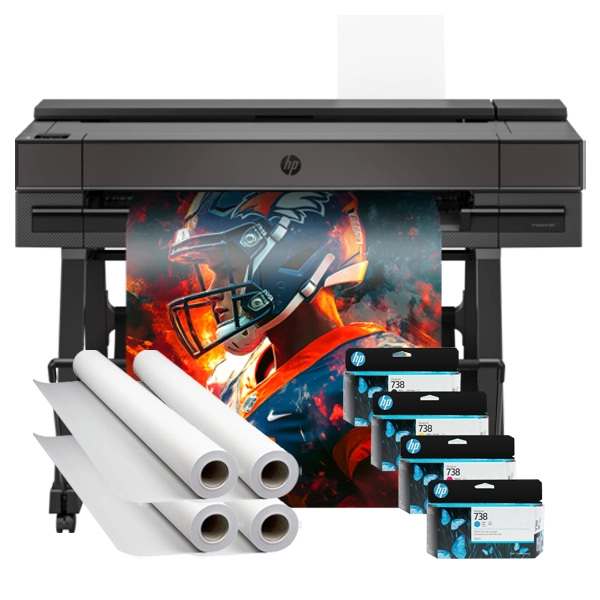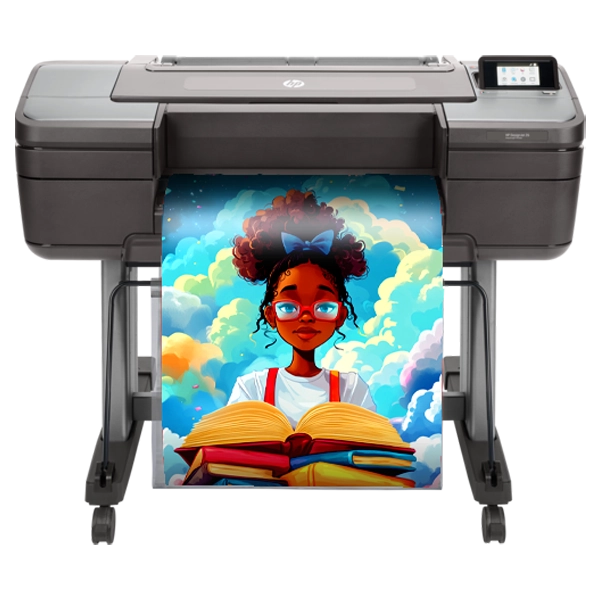Poster Machine for Schools Community History Walls
Why Rural Schools Need Poster Machine for Schools Community History Projects
Rural schools face unique challenges in preserving local history. Unlike urban areas with established museums and historical societies, many small communities rely on oral traditions and personal collections to maintain their heritage. However, these valuable resources often remain scattered and inaccessible to younger generations. This is where school-based visual storytelling projects become invaluable.
By investing in a quality Amplify Poster Maker, schools can empower students to become active documentarians of their community’s past. These machines transform student research into professional-quality displays that honor local heritage while meeting educational objectives. Additionally, the process teaches valuable 21st-century skills in digital design, communication, and project management.
The impact extends far beyond the classroom walls. When community members see their stories beautifully displayed in school hallways, it strengthens the bond between the school and the town. Parents, grandparents, and local leaders feel valued when their experiences become part of the educational landscape. Furthermore, these projects often uncover forgotten stories and connections that enrich everyone’s understanding of their shared heritage.
Starting Your Community History Wall Project
Launching a successful community history wall requires careful planning and enthusiastic buy-in from all stakeholders. First, form a project committee that includes teachers, students, parents, and community members. This diverse group ensures multiple perspectives and broader community support. Next, establish clear goals for your project—will you focus on founding families, local industries, cultural traditions, or a mix of topics?
Creating a timeline is essential for project success. Allow at least one full semester for research, interviews, design, and production. Begin by having students brainstorm topics that interest them about their community’s past. Encourage them to think beyond obvious historical events to include stories about local businesses, schools, churches, and social organizations. Additionally, consider seasonal themes that align with community celebrations or anniversaries.
Resource gathering comes next in the planning phase. Identify local historians, longtime residents, and family archives that students can access. Many rural communities have informal historians—often retired teachers or librarians—who possess invaluable knowledge and connections. Furthermore, reach out to local newspapers, historical societies in neighboring towns, and online genealogy resources that might have relevant information.
• Form diverse committee
• Set clear goals and timeline
• Identify community resources
• Create interview protocols
• Design poster templates
• Schedule production time

Featured Product
The Campus Pro 24 Poster Maker delivers precision and vibrant graphics perfect for student history projects.
of students report increased connection to their community after participating in history wall projects
Mastering Interview Techniques for Young Historians
Teaching students effective interviewing skills transforms them from passive learners into active researchers. Begin with classroom practice sessions where students interview each other about family traditions or memorable events. This builds confidence and helps them understand the interview process before meeting community members. Additionally, role-playing exercises help students anticipate different personality types and communication styles they might encounter.
Preparation is key to successful interviews. Students should research their subjects beforehand, understanding basic biographical information and historical context. Create interview guides with open-ended questions that encourage storytelling rather than simple yes/no responses. For example, instead of asking “Did you enjoy school?” teach students to ask “What was a typical school day like when you were my age?” Furthermore, encourage follow-up questions that dig deeper into interesting details.
Technical preparation matters too. If using recording devices, ensure students know how to operate them properly. Test equipment beforehand and always bring backup batteries or devices. Teach proper etiquette: arriving on time, dressing appropriately, and sending thank-you notes afterward. Moreover, discuss ethical considerations like obtaining permission to record and use stories in public displays.
Interview Best Practices
Click to discover key strategies for successful community interviewsCreating Connections
• Start with easy, warming questions• Listen more than you speak
• Show genuine interest and respect
• Ask for specific examples and stories
• Request photos or artifacts to scan
• Take notes even when recording
• Thank participants sincerely
Design Templates and Visual Storytelling Strategies
Creating visually compelling posters requires balancing historical accuracy with aesthetic appeal. The following design principles help students create professional-looking displays that honor their subjects while engaging viewers.

Timeline Templates
Perfect for showing historical progression, family generations, or business evolution over decades. Include photos, dates, and brief descriptions.

Biography Layouts
Highlight individual community members with portrait photos, quotes, achievements, and personal stories that bring history to life.

Then & Now Designs
Show dramatic changes by comparing historical photos with current images of the same locations or comparing past and present practices.
Community Engagement Strategies
Community Engagement Metrics
Average engagement levels across successful history wall projects
Building community support begins long before the first poster prints. Host an initial community meeting to explain the project’s goals and invite participation. Present examples of similar projects from other schools to inspire enthusiasm. Furthermore, create multiple ways for community members to contribute—not everyone will want to be interviewed, but they might donate photos or artifacts.
Social media amplifies project reach and engagement. Create a dedicated Facebook page or Instagram account to share progress updates, historical discoveries, and calls for specific information. Post “mystery photo” challenges where community members help identify people or places in old photographs. Additionally, live-stream poster unveiling events to include distant family members and former residents.
Partner with local organizations to expand project impact. The VFW might sponsor posters about veterans, while the chamber of commerce could support business history displays. Churches often maintain detailed records and photos spanning decades. Moreover, these partnerships provide additional validation and resources for student research.
Limited resources often concern rural schools considering history wall projects. However, creative solutions abound. Start small with one hallway or even a single wall. Use a phased approach, adding new posters each semester. Furthermore, involve art classes to create complementary displays using traditional media, mixing printed posters with student artwork.
Technology gaps require flexible approaches. Not all students may have home internet access for research. Schedule library time, create research packets with printed resources, and organize group work sessions. A quality poster machine for schools on campus ensures equal access to professional printing regardless of home resources. Additionally, partner with the local library to access their databases and historical archives.
Sensitive topics inevitably arise when documenting community history. Prepare students to handle controversial subjects with maturity and respect. Establish guidelines for addressing difficult periods like economic hardships, social conflicts, or tragic events. Moreover, include multiple perspectives when covering divisive topics, teaching students that history is complex and multifaceted.
Sustainability ensures project longevity. Create digital archives of all research and final posters. Train multiple students and teachers in poster design and printing techniques. Document your process for future classes to build upon. Furthermore, establish a rotating display schedule to keep the history wall fresh while preserving previous work in protective storage.
Conclusion: Building Bridges Through Visual Storytelling
Creating community history walls in rural schools does more than preserve the past—it builds bridges between generations, strengthens community bonds, and gives students invaluable real-world skills. Through these projects, young people discover that they are part of a larger story, connected to those who came before and responsible for passing these stories forward. Furthermore, the pride and ownership students feel when seeing their work professionally displayed cannot be measured in test scores alone.
The investment in a quality printer for posters pays dividends far beyond the initial project. Schools find countless uses for large-format printing throughout the year, from educational displays to event promotion. Moreover, the skills students develop—interviewing, research, design, and project management—prepare them for success in any future career path.
As you embark on your own community history wall project, remember that perfection isn’t the goal. The goal is connection—between students and their heritage, between school and community, between past and present. Every poster tells a story, and every story matters. Additionally, these visual displays create lasting legacies that future students will study and build upon.
Start small, dream big, and watch as your hallways transform into galleries of local pride. With the right tools, including a reliable poster machine for schools community history projects, dedication from students and teachers, and support from your community, you’ll create something truly special. Therefore, take that first step today—your community’s stories are waiting to be told, and your students are ready to tell them.
Ready to start preserving your community’s heritage? Explore our complete line of school poster makers and discover how easy it is to create professional-quality history displays. Contact us today for a personalized consultation and see how we can help bring your vision to life.


